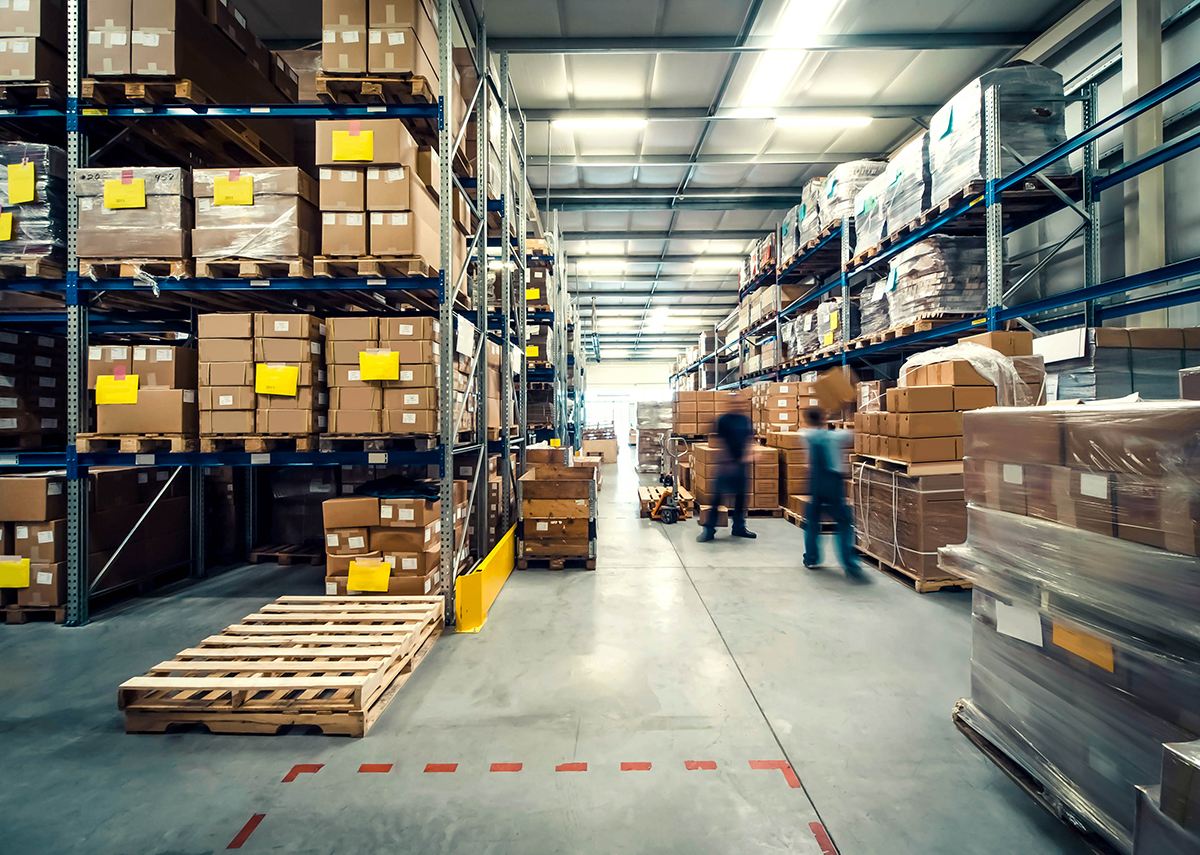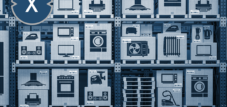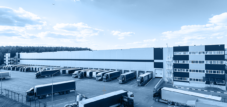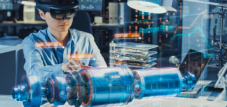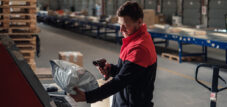Smart Factory: With effective intralogistics to Industry 4.0
Language selection 📢
Published on: March 22, 2021 / update from: April 24, 2021 - Author: Konrad Wolfenstein
In general, the term Industry 4.0 is defined as the close integration of industrial production with the latest information and communication technology. Many approaches to these guiding principles of Industry 4.0 can already be found in intralogistics; especially with regard to automation and networking of storage systems.
Modern logistics goes far beyond just packaging and transporting goods. Speed, precision, flexibility and networking have long been crucial competitive factors there, because customers want to access inventory at any time and from any location and be informed about its availability. Networking and interconnection including digital information management, these core requirements of Industry 4.0, have long since arrived in the intralogistics industry.
Interlinked intralogistics
In the not too distant future, the majority of goods will no longer be removed manually from rack warehouses and transported by hand for picking or assembly, but will instead be moved using state-of-the-art IT and logistics systems. In practice, this means that orders are processed with less and less human effort, making them faster and more precise. The storage systems also automatically inform you as soon as the stock of goods is running low. The parts are then automatically ordered or reproduced before finally finding their way back into the systems. The annual inventory is therefore no longer necessary because the inventory is permanently and transparently visible.
The networked systems required for this drive fundamental changes in intralogistics. Since the devices and robots are always connected to each other, they communicate their tasks with each other autonomously and automatically. For each job, the intelligent systems check with each other to determine which next step is most effective. For example, if it involves transporting goods to a picking station, the vehicle that has the shortest route to the loading point receives the order.
There is no longer any provision for central control software or even human intervention. The productive consequence is a better material flow and reduced idle times, which increases the utilization and efficiency of the systems and thus reduces costs.
But autonomous transport robots are only one approach to networking and automating the warehouse. In addition, automated storage and retrieval systems, including mechanical picking aids, find their way into the warehouse. These tools are another way to advance the industry's 4.0 development approach to logistics. In addition to increased productivity with greater precision, this also leads to a reduction in the proportion of manual work, which helps to defuse the labor shortage in Germany given demographic developments.
The resulting ever larger data flows require significant investments in the IT infrastructure on the operator side in the form of high computing power and fast data lines.
Decentrally controlled intralogistics for just-in-time production
The flexibility and networking not only affects parts of the warehouse, but also the intralogistics as a whole. This also includes their interaction with other areas of the company; such as production.
Software-controlled, intelligent material warehouses play a central role in the networked production of Industry 4.0. In many companies, order-controlled storage devices already supply assembly with raw materials just-in-time, thereby ensuring the smooth flow of materials.
At the end of this development towards Industry 4.0 is self-sufficient production: the production machines themselves order the supplies of parts and raw materials they need from the central warehouse or intermediate buffer solutions. With the help of autonomous industrial trucks or conveyor belt systems, the goods are transported just-in-time directly to the assembly line. The order is placed according to the pull principle: This stipulates that the goods are only transported and processed when actually needed. Unnecessary material movements and unnecessary warehouses become obsolete.
For this purpose, warehouse and production are closely linked via a WMS, with all provision and picking processes being controlled by the system. This gives intralogistics the crucial intermediary function in ensuring a smooth flow of materials in production.
What's next?
Many companies are already using comparable technologies that come very close to the Industry 4.0 idea of networked production. However, these logistics approaches are still mostly controlled by a central software system. However, as soon as the vision of the Internet of Things has become established and all machines and items involved in the work processes communicate with each other digitally, the idea of a complete smart factory be successfully implemented. This is the time when the complete change to Intralogistics 4.0 will have taken place.
Why Xpert.Plus ?
Xpert.Plus is a project from Xpert.Digital. We have many years of experience in supporting and advising on storage solutions and in logistics optimization, which we bundle in a large network Xpert.Plus
I would be happy to serve as your personal advisor.
You can contact me by filling out the contact form below or simply call me on +49 89 89 674 804 (Munich) .
I'm looking forward to our joint project.
Xpert.Digital – Konrad Wolfenstein
Xpert.Digital is a hub for industry with a focus on digitalization, mechanical engineering, logistics/intralogistics and photovoltaics.
With our 360° business development solution, we support well-known companies from new business to after sales.
Market intelligence, smarketing, marketing automation, content development, PR, mail campaigns, personalized social media and lead nurturing are part of our digital tools.
You can find out more at: www.xpert.digital – www.xpert.solar – www.xpert.plus



